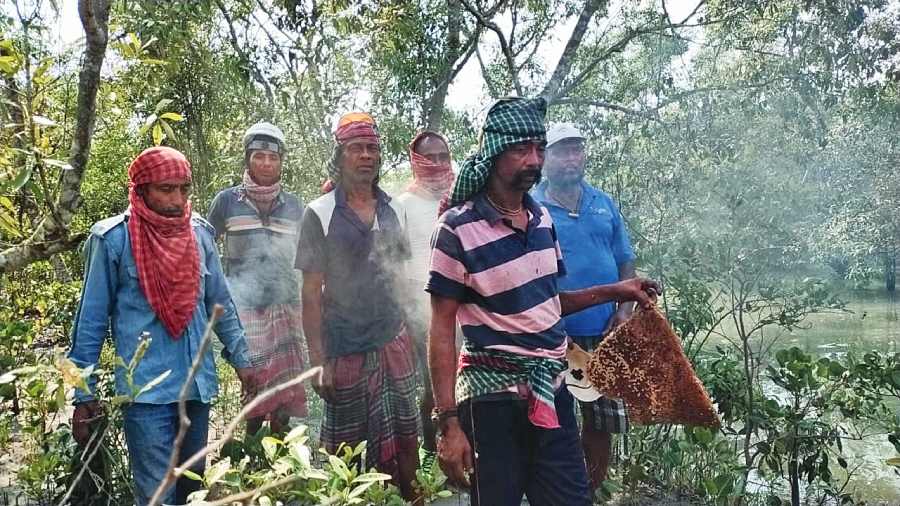The bees are back in the Sunderbans after two years as the forest recovers from the assault of Cyclone Amphan.
Their return has prompted foresters to revive honey collection in the mangrove forests.
Since April 8, groups of honey gatherers — locally called mouli — with permits from the forest department have been venturing into buffer areas of Basirhat and Sajnekhali forests.
“In 2020, Amphan caused massive devastation to the forests. The insect population and beehives were not spared. Even last year, there were not enough flowers to attract the bees. This year, the flowering seems much better,” said Tapas Das, field director of the Sunderbans Tiger Reserve.
“Amphan almost destroyed everything in 2020. Covid also posed a huge challenge in 2021,” said Biswanath Mondal, a honey collector at Amlamethi village in the Gosaba block.
“This year, the flowering has been good, especially the khalsi flowers. The bees are coming in large numbers,” said Mondal.
The bees that gather nectar from the khalsi flower (Aegiceras corniculatum) are believed to be the source of the best honey in the Sunderbans.
Foresters said there are multiple kinds of bees in the mangroves. Among them, the Apis dorsata type makes more hives and honey.
“The bees come from the Himalayas in search of these flowers. They are migratory and reach upto Indonesia before returning home,” said a forest official.
“Amphan had destroyed the habitat of the bees and led to much less flowering even in 2021. We had barely a few hundred kilograms of honey last year,” said the official.
A researcher said that though Amphan is believed to have wreaked massive devastation in the mangroves, the impact on the insect population has not been studied.
“In the absence of research, the moulis have the best sense of the damage,” said Silanjan Bhattacharyya, a professor of zoology at West Bengal State University.
For now, the forest department has issued permits to close to 50 groups of honey collectors in the Sajnekhali and Basirhat ranges.
During the course of honey collection, the moulis eat and sleep on their boats stocked with food, fuel and other essentials. They get off their boats and enter the forests, harvest honey from beehives and return to the boats
Even the buffer areas of the Sunderbans are tiger territory. The moulis must wear masks but on the back of their heads because tigers usually attack from behind.
When the collectors find a suitable spot, they cover their faces with gamchas and prepare a bundle of leaves of mangrove date palms.
The bundle is lit. The smoke reduces chances of the moulis getting stung.
The moulis then cut combs from the hive. The combs are squeezed to extract the honey.
The collectors give the honey to the forest department. The honey is refined and sold by the West Bengal Forest Development Corporation.
For each kilo of honey, a group of collectors gets approximately Rs 200, said officials. A jar of 500g of honey is sold at around Rs 350.
Considering the risks involved, the income is too low, said activists working with self-help groups in the Sunderbans.
Mondal, 36, led a team of 10 moulis to a forest in Sajnekhali. The group managed to collect around 100kg of honey. They started on Friday evening and returned on Monday.
This year, the foresters have set a target of collecting 16 metric tonnes of honey. The drive will last a month.
